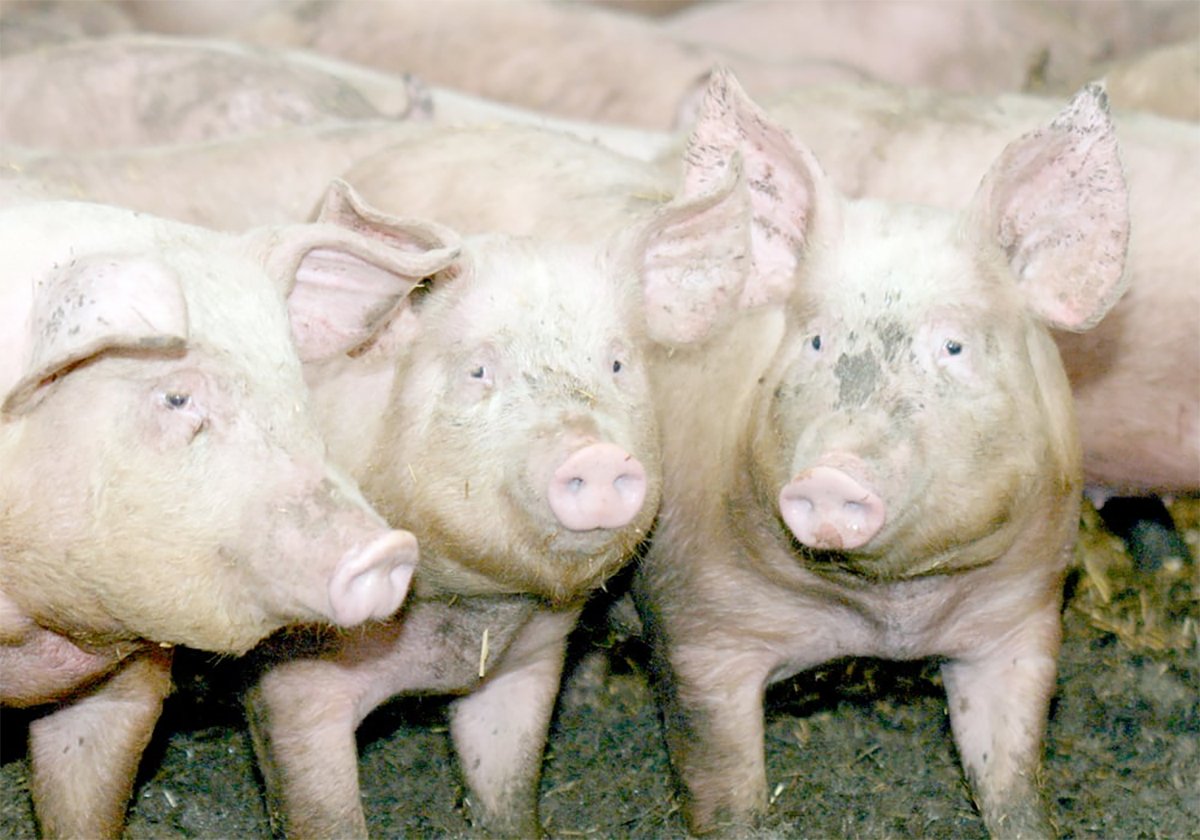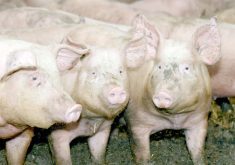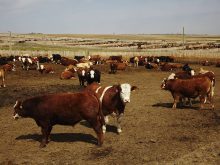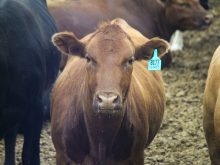MANDURAMA, Australia – A kangaroo leaps out of the ditch in front of Guy Fitzhardinge as he turns out of his driveway. The scene is thrilling for visitors, but the Australian rancher is grateful the dusty brown creature did not wreck his car.
Herds of kangaroo are common on his beef farm in west-central New South Wales state.
A committed environmentalist, he appreciates wildlife but kangaroos can wreck fences and pound fragile grasslands ravaged by five years of drought.
He works hard to preserve natural areas through Bush Heritage Australia, a non profit environmental preservation organization. It’s where he met his wife, Mandy Martin, a nationally recognized landscape artist who was working on an environmental project.
Read Also

The Western Producer Livestock Report – November 13, 2025
Western Producer Livestock Report for November 13, 2025. See U.S. & Canadian hog prices, Canadian bison & lamb market data and sales insights.
Martin has created a major collection of oil paintings on canvas of the wild lands. Her pieces sell for thousands of dollars and decorate their home overlooking hills dotted with old stand eucalyptus trees.
A second generation farmer,
Fitzhardinge grew up in this area 265 kilometres west of Sydney raising sheep, as did the early settlers who crossed the Blue Mountains at the turn of the 19th century.
“In this country it was basically sheep for wool production,” he said.
Declining wool prices and a shortage of reliable shearing crews forced Fitzhardinge to sell his flock of 15,000 sheep, for which he was paid $10 a head. At the same time he was increasing his Black Angus herd.
It was not his intention to farm, but while he was completing a master’s degree in agriculture economics his father asked him to return five months before graduation.
As a graduate student he was paid $140 per week, had his own office and secretary.
He returned to the farm for $40 per week, from which his father deducted $10 for board. The hours were long and hard. When he approached his father for a raise, he was told, “you’re not worth it.”
He had plenty of academic knowledge but few practical farm skills.
Fitzhardinge has learned plenty since and applied his love of learning to everything he does, whether it is working to preserve natural areas or improving his cattle.
He sat on the board of directors for Meat and Livestock Australia, a national organization that handles identification, traceability, promotion and research and development for the red meat industry.
His work with such organizations has allowed him to travel to Japan, South Korea and the United States.
“If more producers went to Japan and South Korea, then more producers would realize that this is a whole new culture of people with totally different standards,” he said.
They would also see the competition for the consumer dollar from numerous protein products, see how food is presented and gain a new appreciation of what these customers want.
The rancher is also chair of the Co-operative Research Centre for Cattle and Beef Quality based at the University of New England. A $122 million initiative, it started in 2005 to genetically improve beef quality, support environmental research and ensure Australia is the number one beef supplier to Asia.
Government provides matching research funding but Fitzhardinge fears federal support may erode over time. The country has no farm subsidies other than farm fuel rebates and drought relief programs.
“We have never had a subsidy program like they do in the States. There were very low level of farm subsidies.”
Drought programs are available but Fitzhardinge has little faith in them.
“They are so hard to bloody get, you have to be down on your heels before you even get in the door and it just keeps you in agriculture longer.”
The beef business was good before drought desiccated his profits. Two years ago, he marked four consecutive years of the highest level of profitability since he started farming more than 30 years ago. However, his costs also went up and now the desperate search for water and feed is taking its toll.
The family saves bath water for flower beds and trees. Red bare ground is the norm on the farm these days. He can walk in any pasture and never crush a blade of grass. Under normal conditions the grass should be knee high. The gaps are filled with troublesome weeds. Creek beds are nearly dry.
Fitzhardinge has been supplementing his 1,500 cows for almost a year and estimates his feed costs at $8,000 per week. He had two years worth of hay silage but that is running out and since there is a feed shortage everywhere, finding more is nearly impossible.
He feeds his cows every other day and they graze on short, wispy clumps of grass. They are thin and their backbones stick out. They are also more susceptible to disease.
What is plan B?
“Get rid of the cattle,” he said grimly.
A massive cull is the last resort because he has 30 years worth of data collected from a program to build up fertility rates and produce the kind of carcass desired in the international market.
He sells his steers to a feedlot five hours to the north where cattle for export are fed up to 300 days to achieve a 350 to 400 kilogram carcass. Domestic demand is for carcasses in the 200 to 230 kg range.
“We are raising cattle that can take feeding for longer days. Most of these would be fed for 300 days,” he said.
The goal is to create marbling without building a thick layer of outside body fat. In his experience, processors penalize for flaws but rarely reward quality.
“We don’t actually push marbling. The processors all say, ‘we want marbling,’ but the reality is they won’t pay you for it,” he said.
Still, he believes the groundwork starts on the farm.
Besides home raised bulls, he leases up to five bulls a year from a stud farm and tests them on his herd. He keeps the heifers but cannot sell the bulls as breeding stock. He records mature cow weights and milk production, scans heifers’ ribeye size and evaluates fertility and carcass merit. His cattle fit into the top five percent of high performance herds registered in the Australian Angus society.
Fitzhardinge’s management records received a boost when he adopted the country’s individual cattle identification introduced in 2000-01.
Before this program, cattle producers used tail tags that could be easily removed.
There was a premise identification number but no individual identification database.
Many producers resisted the change to a mandatory electronic system.
Later, when foot-and-mouth disease hit Britain and Canada discovered BSE, people were more motivated to adopt a system lest Australia lose market access because of a foreign animal disease.
“When we looked at what happened to you guys, we knew lifetime traceability was needed,” he said.















